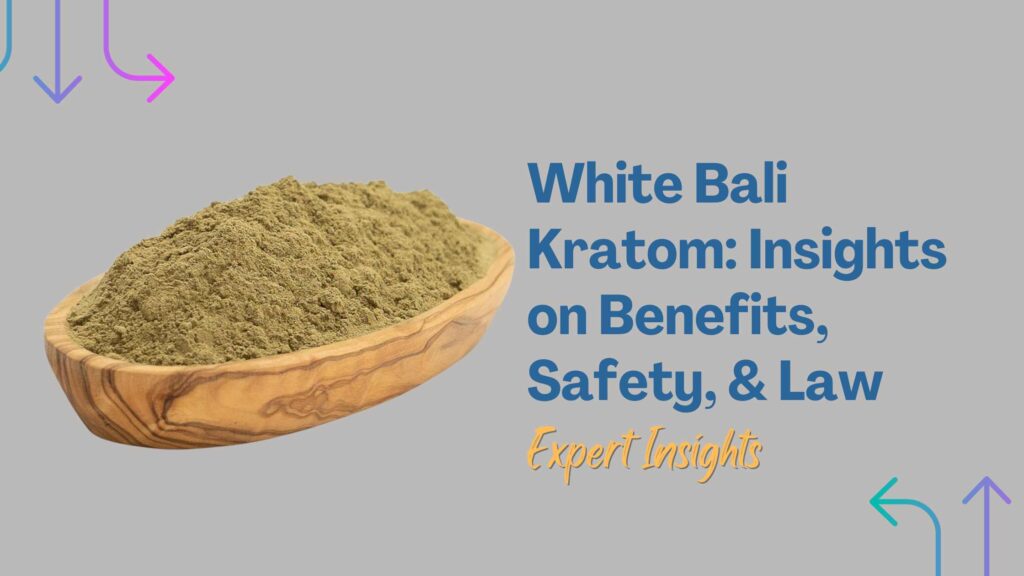
Table of Contents
Introduction
Have you ever stumbled upon a natural product that piqued your curiosity, not just because of its unique name but also due to its growing buzz in wellness circles? That’s exactly how I felt when I first encountered White Bali Kratom. This intriguing herb, with its roots deeply planted in the lush forests of Bali, Indonesia, has been making waves across the United States. But what exactly is White Bali Kratom? Let’s delve into its fascinating world, exploring its nuances and what makes it stand out in the diverse landscape of herbal supplements.
What is White Bali Kratom?
White Bali Kratom, a name that often evokes a sense of exotic mystery, is derived from the Mitragyna speciosa tree – a plant native to Southeast Asia. Traditionally used by local communities for its stimulating properties, kratom has crossed oceans to find a place in the American herbal repertoire.
My first encounter with kratom was nothing short of serendipitous. Wandering through the vibrant markets of Bali a few years ago, I was captivated by the aroma and allure of a variety of herbs, but kratom stood out. Its leaves, rich in alkaloids like Mitragynine, are said to offer a unique blend of energy and calm – a duality that intrigued me instantly.
The White Bali strain, in particular, is celebrated for its invigorating effects. Unlike its Red and Green counterparts, which are known for more sedative and balanced effects, White Bali offers a more pronounced energy boost. This makes it a favorite among users seeking a natural way to enhance focus and vitality.
Legal Status in the U.S.
Navigating the legal landscape of kratom in the U.S. can be akin to walking through a labyrinth. The legality of kratom is a patchwork quilt, varying significantly from state to state. In some places, it’s as accessible as a cup of coffee, while in others, it’s treated with the same caution as controlled substances.
The FDA’s stance on kratom is complex and evolving. While not federally regulated as a controlled substance, the FDA has expressed concerns about its safety and potential for misuse. This stance has led to a regulatory grey area, where the legality and acceptance of kratom hinge on continuous research and policy debates.
My personal take on this is to always err on the side of caution. During a recent trip to Denver, I was reminded of how diverse the regulations can be. While kratom was freely available in many shops there, I was aware that just a few states over, the rules could be entirely different. It’s paramount for anyone interested in White Bali Kratom, or any kratom product, to stay informed and compliant with local laws.
Potential Benefits and Uses
White Bali Kratom, often shrouded in a veil of mystique, is lauded for its potential to uplift and rejuvenate. Users frequently describe a sense of heightened energy, sharpened focus, and a subtle wave of euphoria. Remember, these accounts are largely anecdotal, as the scientific community is still unraveling the complexities of kratom’s effects.
I recall a conversation with a barista in Austin, a city known for its embrace of alternative wellness trends. She shared how White Bali Kratom had become her go-to for those early mornings and late-night shifts. “It’s like coffee without the jitters,” she said with a smile. Her experience echoes a sentiment common among kratom enthusiasts – a natural boost to the rhythm of life.
Safety and Considerations
However, with exploration comes responsibility. White Bali Kratom is not without its caveats. Potential side effects, such as nausea, dizziness, or sleep disturbances, have been reported, particularly with higher doses. It’s a stark reminder that natural doesn’t always mean risk-free.
During a health and wellness seminar I attended last year in California, a nutritionist emphasized the importance of moderation and understanding individual reactions to supplements like kratom. She advised starting with small doses and being vigilant about any adverse reactions. Consultation with healthcare professionals is always a prudent step, especially for those with existing health conditions or those taking other medications.
Consumer Tips: Purchasing and Using White Bali Kratom
Navigating the kratom market can be a challenge. Quality and purity vary widely, and the unregulated nature of the market can be a minefield for consumers. Opt for reputable vendors who provide transparent sourcing and thorough testing of their products. Whether it’s in powder, capsule, or tea form, the quality of the product is paramount.
As someone who values the ritual of tea-making, I find White Bali Kratom tea to be a soothing experience. The process of brewing, the aromatic release, and the first warming sip is a journey in itself. For newcomers, I recommend starting with a lower concentration to gauge your body’s response.
The Cultural Context in the U.S.
In the U.S., kratom, particularly White Bali Kratom, is more than just a supplement; it’s part of a larger narrative about wellness, natural remedies, and the search for alternative therapies. From yoga studios in New York to wellness retreats in Arizona, kratom has found its way into various facets of American life. It symbolizes a shift towards more holistic approaches to health and wellbeing, resonating with those seeking a more organic path to vitality and balance.
Conclusion
The journey through the world of White Bali Kratom is as complex as it is fascinating. From its energizing properties to the legal and cultural tapestry it weaves, this herb invites both curiosity and caution. As we explore the realms of natural supplements, let’s do so with an informed mind and a respectful approach to the diverse experiences and perspectives they bring. I encourage you to dive into the conversation, share your own stories, and join a community that’s navigating the ever-evolving landscape of herbal wellness. Together, let’s discover and discuss the multifaceted world of White Bali Kratom in modern America.


